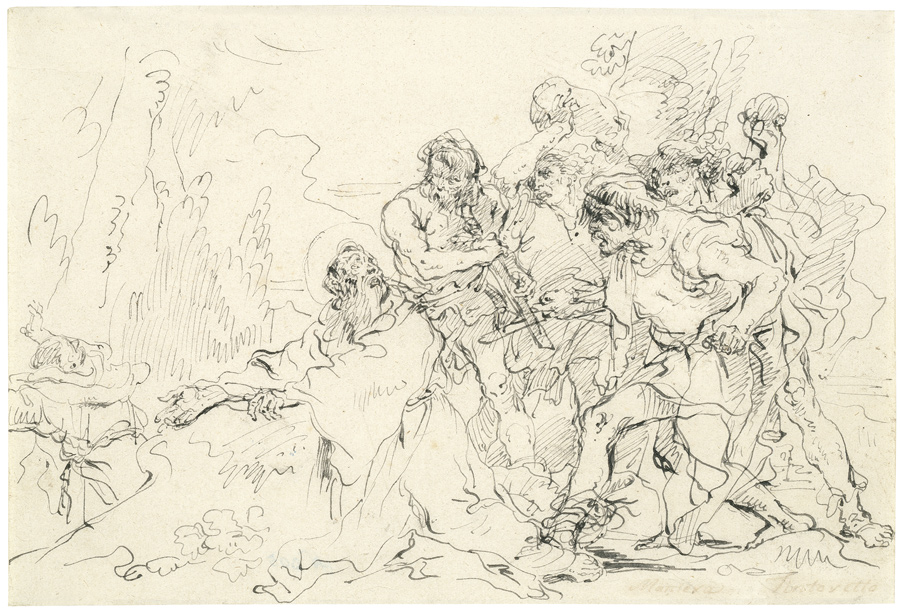Loading the page ...
Giovanni Domenico Tiepolo
(1727–1804, Venice)
The Death of Saint Peter Martyr of Verona. Pen and greyish-black ink. 19.5 x 28.5 cm. With old pen inscription: “Maniera di Tintoretto” (faded) and “N 305” (verso). Watermark: Letters AM.
This drawing, with its energetic, radically reductionist style, belongs to the artist’s early work and may be seen in association with a group of drawings in the same technique, which are to be found, variously, in the Robert Lehmann Collection in the Metropolitan Museum of Art, New York; in Stuttgart; London (British Museum); St. Petersburg (Hermitage); Dresden; Besançon and Montpellier. The group is dated circa 1760. As in the case of the present drawing, all these works without exception are executed in a penwork technique that dispenses with washes. The terse, edgy style of drawing reveals them to be pure study sheets on which the artist quickly jotted down ideas in search for satisfactory compositional solutions. At the same time there are unmistakable parallels, in respect of composition and theme, with the artist’s printed oeuvre, such as the etchings The Stoning of Saint Stephen (Succi 72) and the Martyrdom of Saint Johann Nepomuk (Succi 76). Thus the pose of the two stone-throwers occurs in a very similar form in the etchings. The composition has a marked diagonal thrust, which effectively reinforces the violent nature of the moment. The murderers rear up over the prostrate saint like a pack of wild animals, their sinewy bodies tensed to maintain the deadly impetus of the attack. To the left a monk flees from the scene in panic.
Saint Peter Martyr of Verona (c. 1205–1252) joined the Dominican order at the age of 16. He became known as a preacher in nearly all the towns of upper and central Italy and was associated with many wondrous happenings. Peter was also active as an Inquisitor and, because of his uncompromising opposition to the Albigensian heresy, was murdered by hired killers on the road to Milan in 1252. The very next year Peter was canonized by Pope Innocent IV. Another drawing of Giandomenico’s on the same subject is to be found in the Musée d’Art et d’Archéologie in Besançon.
Provenance: Christie’s, Manson & Woods, Important Old Master Drawings, London, 6 July 1977, No. 67.
